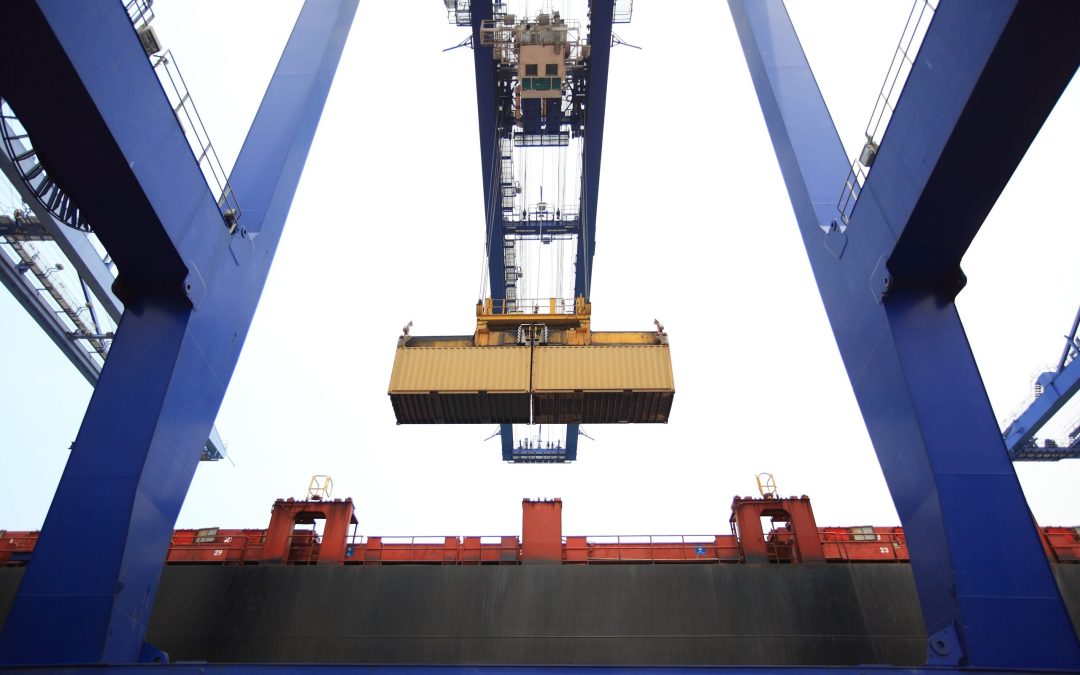Key Summary:
- Investing in overhead cranes improves safety, productivity, and lifecycle performance when done strategically.
- Modern technologies like automation, IoT, and AI diagnostics enhance control, uptime, and data visibility.
- Aligning crane systems with production flow reduces wasted movement and downtime.
- Refurbishment and modular upgrades can often outperform full replacements in ROI.
1. Modernize Your Overhead Crane Equipment
Today’s overhead cranes are more than lifting devices – they’re integral parts of modern manufacturing systems. Strategic investments in automation, controls, and monitoring can deliver major gains in efficiency and safety. Upgrading to semi or fully automated controls with features like pre-programmed paths, anti-sway, and load positioning reduces operator fatigue while improving accuracy.
- Variable Frequency Drives (VFDs): Provide smooth acceleration and deceleration, extending equipment life and reducing energy consumption.
- Remote Operation: Wireless or cabinless controls allow operators to work safely outside hazardous zones.
2. Optimize Crane Design and Capacity
Right-sizing your overhead crane investment prevents both over and under-spending. A crane that operates at its optimal duty cycle ensures maximum efficiency without undue strain. Modular design and below-the-hook attachments – like magnets, grabs, or vacuum lifters – expand functionality and minimize manual labor.
3. Integrate Cranes Into Production Flow
Efficiency peaks when cranes move in harmony with production lines. By integrating your crane system with conveyors, AGVs, or robotic equipment, you can achieve seamless material handling. Linking your crane operations to ERP or job scheduling software ensures each lift happens at the right time, minimizing idle time and bottlenecks.
4. Invest in Digitalization and Monitoring
Predictive maintenance and smart monitoring tools are reshaping crane asset management. Internet of Things (IoT) sensors, load counters, and usage trackers provide data on performance, usage, and safety. Service intelligence platforms like Crane 1’s Cranium AI provide step-by-step guidance that ensures every repair is completed safely, efficiently, and correctly. Cranium is engineered to minimize diagnosis time and maximize first-time repair success.
- IoT & Sensors: Enable real-time monitoring and predictive maintenance.
- AI Diagnostics: Accurate diagnostics that increase first time fix rates and increase uptime with safety at the forefront of every repair.
- Fleet Management: Centralized dashboards reveal utilization rates and opportunities for efficiency.
5. Safety and Productivity Enhancements
Safety and productivity go hand in hand. Collision avoidance systems, zoning, and geofencing technologies protect operators and equipment. Additionally, ongoing operator training improves skill, confidence, and response time during complex lifts.
- Collision Avoidance: Prevents contact between cranes and nearby equipment.
- Zoning & Geofencing: Restricts movement in unsafe or restricted areas.
- Operator Training: Enhances safety awareness and performance.
6. Manage Lifecycle Costs Strategically
Not every crane upgrade requires a complete replacement. Refurbishing older cranes with modern drives, controls, and electrification can significantly extend service life while reducing capital costs. Standardizing crane components across multiple facilities simplifies maintenance, reduces spare part inventory, and ensures consistent operator training.
The Bottom Line
Efficiency comes from automation, integration, and intelligence. A modern overhead crane isn’t just a lifting tool – it’s part of a connected production ecosystem. By upgrading your systems with smart controls, predictive maintenance tools, and modular attachments, your facility can shorten cycle times, improve safety, and maximize ROI. For expert consultation or modernization services, contact Crane 1 today to learn how we can help optimize your next investment.
Roadmap: Attached downloadable PDF
Frequently Asked Questions
Why should I invest in an overhead crane instead of forklifts or mobile equipment?
Overhead cranes provide safer, more consistent lifting with less floor congestion. They handle heavier loads, improve precision, and reduce long-term labor costs compared to mobile alternatives.
How can I tell if it’s time to modernize my existing crane?
Frequent repairs, downtime, or outdated controls indicate the need for modernization. Crane 1 can assess your equipment and recommend cost-effective upgrades.
How can digitalization improve crane performance?
IoT-connected cranes with real-time monitoring detect performance issues early, improving uptime, energy efficiency, and operator safety.
What industries benefit most from overhead crane investments?
Industries such as automotive, aerospace, logistics, metals processing, and general manufacturing see measurable gains in productivity, safety, and efficiency through overhead crane systems.
